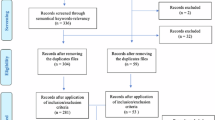Abstract
Technological development towards automation has been taking place for years and a wide range of autonomous systems (AS) have been introduced in homes and retailing spaces. Although these AS seem to be riskless, if they are exploited they can endanger private information of users, which opens a new stage for the security of AS. Humans have an initial and positive bias towards automation that might lead to errors related to unintentional actions or lack of actions. Therefore, the effective adoption of AS relies on users’ attitudes, like the propensity to take risks and the calibration of human trust to avoid situations of mistrust, over trust, and distrust, increasing the systems’ security. This study conducted an online questionnaire to investigate the relationship between an individual’s propensity to take risks and trust in automation. We found that participants with low risk seeking tendencies will trust more in AS when compared to high risk seeking participants. Moreover, other individual differences like age, gender, and education led to interesting results. Thus, our study provides valuable information about the human factors that mediate human and autonomous systems interactions and thereby influence trust.
Access this chapter
Tax calculation will be finalised at checkout
Purchases are for personal use only
Similar content being viewed by others
References
Cerrudo, C., Apa, L.: Hacking robots before skynet. IOActive Website, pp. 1–17 (2017)
Deb, S., Strawderman, L., Carruth, D.W., DuBien, J., Smith, B., Garrison, T.M.: Development and validation of a questionnaire to assess pedestrian receptivity toward fully autonomous vehicles. Transp. Res. Part C: Emerg. Technol. 84, 178–195 (2017)
Dohmen, T., Falk, A., Huffman, D., Sunde, U., Schupp, J., Wagner, G.G.: Individual risk attitudes: measurement, determinants, and behavioral consequences. J. Eur. Econ. Assoc. 9(3), 522–550 (2011)
Hillesheim, A.J., Rusnock, C.F., Bindewald, J.M., Miller, M.E.: Relationships between user demographics and user trust in an autonomous agent. In: Proceedings of the Human Factors and Ergonomics Society Annual Meeting, vol. 61, pp. 314–318. SAGE Publications, Los Angeles (2017)
Hoff, K.A., Bashir, M.: Trust in automation: integrating empirical evidence on factors that influence trust. Hum. Factors 57(3), 407–434 (2015)
Hulse, L.M., Xie, H., Galea, E.R.: Perceptions of autonomous vehicles: relationships with road users, risk, gender and age. Saf. Sci. 102, 1–13 (2018)
Lamb, K., Huang, H.Y., Marturano, A., Bashir, M.: Users’ privacy perceptions about wearable technology: examining influence of personality, trust, and usability. In: Advances in Human Factors in Cybersecurity, pp. 55–68. Springer (2016)
Lee, J.D., See, K.A.: Trust in automation: designing for appropriate reliance. Hum. Factors 46(1), 50–80 (2004)
Linkov, V., Zámečník, P., Havlíčková, D., Pai, C.W.: Human factors in the cybersecurity of autonomous cars: trends in current research. Front. Psychol. 10, 995 (2019)
Lion, R., Meertens, R.M.: Seeking information about a risky medicine: effects of risk-taking tendency and accountability. J. Appl. Soc. Psychol. 31(4), 778–795 (2001)
Lyons, J.B., Stokes, C.K.: Human–human reliance in the context of automation. Hum. Factors 54(1), 112–121 (2012)
Madhavan, P., Wiegmann, D.A.: Similarities and differences between human–human and human–automation trust: an integrative review. Theor. Issues Ergon. Sci. 8(4), 277–301 (2007)
Marsh, S., Dibben, M.R.: The role of trust in information science and technology. Ann. Rev. Inf. Sci. Technol. 37(1), 465–498 (2003)
Meertens, R.M., Lion, R.: Measuring an individual’s tendency to take risks: the risk propensity scale 1. J. Appl. Soc. Psychol. 38(6), 1506–1520 (2008)
Pavlou, P.A.: Consumer acceptance of electronic commerce: integrating trust and risk with the technology acceptance model. Int. J. Electron. Commer. 7(3), 101–134 (2003)
Perkins, L., Miller, J.E., Hashemi, A., Burns, G.: Designing for human-centered systems: situational risk as a factor of trust in automation. In: Proceedings of the Human Factors and Ergonomics Society Annual Meeting, vol. 54, pp. 2130–2134. SAGE Publications, Los Angeles (2010)
Singh, I.L., Molloy, R., Parasuraman, R.: Automation-induced “complacency”: development of the complacency-potential rating scale. Int. J. Aviat. Psychol. 3(2), 111–122 (1993)
Sitkin, S.B., Weingart, L.R.: Determinants of risky decision-making behavior: a test of the mediating role of risk perceptions and propensity. Acad. Manag. J. 38(6), 1573–1592 (1995)
Strauss, W., Howe, N.: Generations: The History of America’s Future, 1584 to 2069. William Morrow & Co., New York (1991)
Author information
Authors and Affiliations
Corresponding author
Editor information
Editors and Affiliations
Rights and permissions
Copyright information
© 2020 The Editor(s) (if applicable) and The Author(s), under exclusive license to Springer Nature Switzerland AG
About this paper
Cite this paper
Ferronato, P., Bashir, M. (2020). Does the Propensity to Take Risks Influence Human Interactions with Autonomous Systems?. In: Corradini, I., Nardelli, E., Ahram, T. (eds) Advances in Human Factors in Cybersecurity. AHFE 2020. Advances in Intelligent Systems and Computing, vol 1219. Springer, Cham. https://doi.org/10.1007/978-3-030-52581-1_4
Download citation
DOI: https://doi.org/10.1007/978-3-030-52581-1_4
Published:
Publisher Name: Springer, Cham
Print ISBN: 978-3-030-52580-4
Online ISBN: 978-3-030-52581-1
eBook Packages: EngineeringEngineering (R0)




